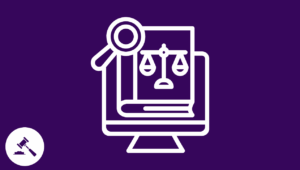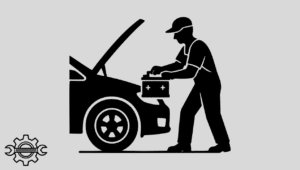There’s something deceptively simple about a name. It’s just a word—or sometimes two—that introduces a brand to the world. But the stakes are high. A great name can trigger curiosity, spark emotional connections, and make a lasting impression. A weak one? It might be forgettable, confusing, or worse—send the wrong message entirely. In this article, we’ll explore the power of naming and how a great name can make or break your brand.
For new businesses and rebrands alike, naming isn’t just a creative exercise. It’s a strategic one.
Why Names Stick (or Don’t): Naming Power
Think of some of the most recognizable brands: Apple, Nike, Uber, Airbnb. These names are short, memorable, and evoke something beyond the literal. Apple sounds clean, simple, and friendly. Nike draws from mythology and speaks to victory. The best brand names feel effortless, but behind them is often a meticulous process of ideation, testing, and refinement.
A name isn’t just a label. It’s a signal. It tells customers what kind of experience they can expect. It influences tone of voice, visual identity, and even product direction.
When a name fails, it usually falls into one of a few traps:
- It’s too generic to stand out.
- It’s hard to pronounce or spell.
- It unintentionally carries a negative or confusing meaning.
- It clashes with existing trademarks or domains.
The Role of Storytelling in Naming
The most powerful brand names are rooted in a story. Take Warby Parker, a brand inspired by two Jack Kerouac characters. Or Patagonia, which evokes rugged, remote landscapes that align with the brand’s outdoor ethos. When a name hints at a deeper narrative, it becomes more than just a word—it becomes part of a mythology.
This storytelling doesn’t have to be obvious. Sometimes it’s just a whisper or a wink. A name like “Slack” subtly reflects the product’s promise to make work communication less painful. The story isn’t always explicit, but it informs tone and direction at every level.
Naming Power and Visual Identity Go Hand-in-Hand
While a name might be the first thing people hear or see, it rarely stands alone. How that name appears on a label, package, or storefront matters just as much. This is where packaging design becomes critical. A strong name supported by strong design becomes more than the sum of its parts.
Take the brand “Method.” On its own, it’s a calm, clean word. But pair it with minimalist packaging and a clear design language, and it reinforces the idea of a smarter, cleaner approach to household products.
The name sets the tone. The design brings it to life.
Naming Across Cultures and Markets: Name Make or Break Your Brand
Global brands face another challenge of naming power: cultural nuance. A name that sounds fresh in English may fall flat—or worse, offend—in another language. Even phonetic clashes can derail a brand’s international aspirations.
This makes research and local testing non-negotiable. Whether it’s a food brand expanding into Asia or a tech product launching in Europe, naming must respect context. Language, slang, pronunciation, and even typography can all affect perception.
When to Rebrand (and Rename)
There are times when a name outgrows its original purpose. Startups that pivot, merge, or scale beyond their initial niche may need to reconsider what their name says about them. Sometimes it’s about legal reasons. Other times, it’s about shedding an outdated image.
But changing a name isn’t something to rush. There’s equity built into brand names—trust, familiarity, SEO ranking, and emotional connection. If a rename is truly necessary, it should be part of a broader strategy, with thoughtful communication to loyal customers.
Naming Power Tips for New Brands
If you’re starting from scratch or helping a client name a new product or company, here are a few practical guidelines:
- Start with strategy. Who are you targeting? What emotions or associations should the name evoke? What tone do you want—playful, premium, functional?
- Think long-term. Choose a name that can grow with your business. Avoid being too literal or niche if you plan to expand your offerings later.
- Make it memorable. Shorter names tend to stick. Alliteration, rhythm, and unexpected combinations can help.
- Check availability. Always search for domain names, trademarks, and social handles. A brilliant name that’s already taken might not be worth fighting for.
- Test it. Say it out loud. Ask people to spell it. See how it looks in different fonts and contexts. Small friction points now can lead to big headaches later.
Packaging Design and Name Synergy
To revisit the earlier naming power point, a packaging design agency doesn’t just wrap a product—it plays a critical role in anchoring the name in consumers’ minds. A clever or beautiful name that isn’t visually supported can fade into the background. Meanwhile, a so-so name elevated by smart typography and layout can become iconic.
From the color palette to the logo lockup, the packaging must echo the personality of the name. That’s what creates brand coherence. That’s what builds recognition.
Name Make or Break Your Brand Final Thoughts
A great name is a brand’s first handshake with the world. It can open doors, inspire loyalty, and carve out space in crowded markets. It deserves time, thought, and collaboration between strategy, copy, and design teams.
You don’t need the perfect name. But you do need the right one—something that reflects your essence, invites curiosity, and stays flexible as you grow.
Because once a name is out there, it’s no longer just yours. It belongs to the people who say it, remember it, recommend it—or don’t.







